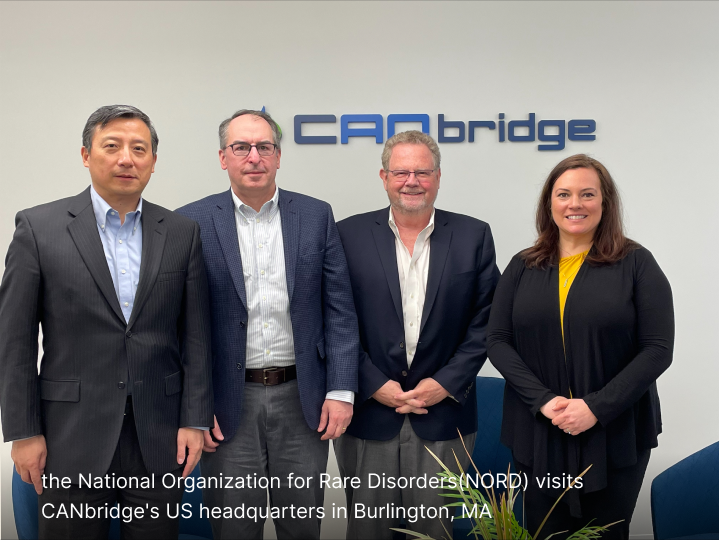The other day as I was driving to work, I noticed a very ordinary thing that is also a miracle.
It was a boy, in a hoodie and sneakers, walking a dog. But it could have been a girl, or a toddler chasing a ball or a kid on a bike. Because all of these things are miracles, and every child who has a genetic rare disease should have the opportunity to do them—regardless of where they live or what their circumstances are.
Which is why I founded CANbridge, and why I go to work every day. And one day last month, I had the privilege of meeting with one of the leading groups fighting for rare disease patients, the National Organization for Rare Disorders, or NORD, which is celebrating its 40th year.
NORD came to our US headquarters in Burlington, MA, to learn about us, just as we wanted to learn more about them as we look at the US as a potential market for our spinal muscular atrophy gene therapy. But what I think may have surprised them are the similarities between them and CHARD, the China Alliance for Rare Disease, where I am the Deputy Director General. At CHARD we are working to build a rare disease eco- system in China, just as NORD did, and continues to do, in the US.
1983 was the beginning for rare diseases. Activists, who later formed NORD that same year, were instrumental in bringing about the Orphan Drug Act. Industry innovators, such as Genzyme, where I spent a formative part of my career, developed some of the first rare disease treatments based on the model this legislation enabled. NORD helped shape the US rare disease ecosystem. The US set the standard for the world, as several other countries have passed their own rare disease legislation, carving out a regulatory space to encourage drug development for these so-called orphan diseases. Following in NORD’s footsteps, patient advocacy organizations grew.

CANbridge CEO, James Xue, PhD, NORD CSO, Edward Neilan, MD. PhD, CANbridge Chief Development Strategist and Interim CMO, Gerry Cox, MD. PhD
And now, in China, the government has created a rare disease regulatory infrastructure to meet the needs of patients. As the leader of CHARD, I was closely involved in drafting language in the new pharmaceutical law in China that incorporated rare diseases for the first time.
At CANbridge, our goal is to create rare disease treatments that are both more effective and more accessible to patients everywhere. We believe we can introduce innovation and sustainability to the rare disease market. And, in doing this first in less-developed markets, where patients have very little access to rare disease treatments, we believe we can forge a positive change for the entire market.
All of us have in our pockets computers that once filled rooms and cost millions. And yet now, millions can have them because innovation made them accessible. The rare disease market is still in the mainframe era. The irony is that NORD was formed because a parent in the US couldn’t get access to a drug approved in another country for her child with a rare disease. Now, parents of children in less developed countries can’t get access to treatments available in the rest of the world because of cost.
Like tech innovators, we are not content with this status quo. We believe we can create a more sustainable rare disease model that promotes efficacy in treatment as well as efficiency in development and manufacture. Like NORD, we believe that access to treatment is the centerpiece of the rare disease world. And like parents of children with rare diseases everywhere, we long for tangible hope.
Our mission is to help make it so.

